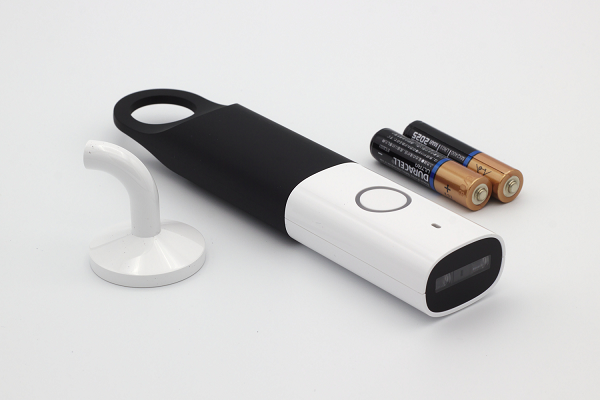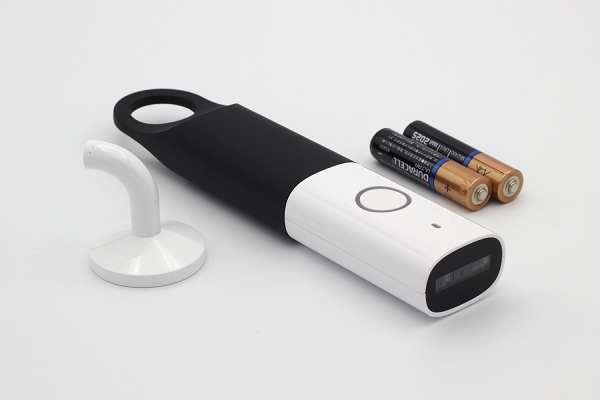Amazon’s Dash Wand: AT?
Tuesday, August 1, 2017


Amazon’s Dash Wand
Amazon’s second generation Dash Wand is out. What potential does it have to support personal independence for members of our community?
The Wand is an example of the use of a technology platform (Amazon’s Echo/Alexa) to reduce the friction in accessing products of all kinds. While the technology is not specifically aimed at people with disabilities, it is usable by people with disabilities. It requires that each PWD examine how to adjust the platform’s capabilities to any specific need for personal accommodation.
In this sense, it is the same challenge that we always have in interacting with this world not designed for our use. But as technology tries to make everything easier to use, some possibilities are also opened up for our community.
I have been using the Wand with my Amazon Echo for some weeks now, and I will try to review some of those possibilities. Frankly, though, only actual use by members of our community will illuminate the real range of those possibilities.
- You can activate Alexa, ask questions, make phone calls, listen to your favorite music, run your Fire TV, change your home’s environmental conditions, and so on by voice. Since you can be anywhere in your house when you do any of these things, some mobility and fine motor characteristics become immaterial in controlling a remarkable part of daily life.
- The sheer number of skills available for the Echo (15,000 right now) means that you can probably find some to use if you can actually locate them in that disordered app universe of potential. I haven’t been able to find overviews of disability-friendly skills, but there are some in there, especially for making community access easier. This is much the same situation in the use of ride-share systems, where you can reduce the pain points of using public transportation with judicious choices.
- There is a portable version of Echo, called the Tap, that can use any wi-fi system and has Bluetooth connectivity. It originally required pushing a button to access, but now has a hands-free method. Take it on trips, use it at work, etc.
- The Echo dot is a relatively inexpensive small version that can be placed in any room in your house, linked to your wi-fi, and can be used for all the typical Echo uses, plus things like a local intercom for talking to others in the house.
The Wand’s biggest potential use is in purchasing products that you will use over and over. You will need to be a Prime member to make the best use, and that is $99 a year, a significant cost. The primary reason for choosing this is the two-day free shipping benefit and the ability to choose items as you notice your need for them with periodic shipping of the accumulated items.
The Wand itself allows you to use speech directly to order items that you wish to purchase. Speech ordering seems to work best with those items you order regularly. The other thing that the Wand can do is scan a barcode and place the item in your shopping cart on Amazon. You don’t have to have Amazon open at the time. In either case, the items will not be purchased until you go on Amazon and tell them to process the order. So, you can order items as you think of them and then regularly process the purchase.
I have not yet tried to scan a barcode in a store using my phone’s wifi hotspot yet, though I intend to try that. It would be easier to pick from alternatives in a market and then order that item repeatedly once I got it through Prime.
Not every item you might want will be delivered in two days, only those available through Amazon Prime. This reality has gotten me to change my preferred items to those covered by Prime.
There is also a system for delivering items you would use a lot and regularly. I have avoided using this because I don’t quite get how it works yet. It is called Prime Pantry, and if you order 5 items that qualify as part of a Prime Pantry Box, you get free shipping. I think the idea is to have regular orders delivered to your home that would ordinarily be the sort of thing you would get every week from a supermarket.
There are also other tools for ordering items through Amazon, such as Dash Buttons for products you know you will be using regularly. The buttons are on your home page making it easy to reorder. You can also subscribe to items when your use is very predictable, such as supplements (60 pills, two a day, order every 30 days). They will warn you when they are going to process the subscription and it is easy to change your subscriptions and Dash Buttons. If you choose enough qualifying subscriptions, you get a 15% discount.
These services are very different from the way I have purchased such items throughout my 70 years, but I have become used to the new choices, and I am beginning to understand their usefulness.
These services (at least to the extent that you don’t have to pay for shipping) would allow regular purchases without having to travel to get them. With the barriers to using public transportation and the cost of owning and running a vehicle, such an approach to repeated purchases could be very attractive. Also, with many mobility impairments, preparation for travel and managing grocery bags while using a wheelchair (for example) are wasted time that could be used for other activities.
Thus, such systems can be viewed as steps in expanding convenience and reducing the amount of time that the real ongoing lack of accessibility in American society imposes on our community.
Over the next couple of years, more systems like Echo and apps like Alexa will become more mature. For example, Google Home is rapidly developing as a hands-free voice activated system focused on much the same universe as Amazon’s. There will be more.
It is important that our community understands the abilities of such systems, and share our experiences. It is also important that our community begins to expand those skills used by such systems so that they more readily match our needs, through the development of these skills and apps by members of our community.
In the meantime, decide what you want such a system to do before deciding which one you will use. While all such systems will become more capable over time, the one you choose needs to support your life now even if you expect it will mean more to you in the future. Cost is obviously an important factor in picking a system as well. Costs will likely drop overall. But once you choose a system, you’ll be stuck with it for a while.
To summarize: The two big areas of use of such systems are your personal living situation and those community services which you now use or would use if it was easier to do so. Investigate and research.
And don’t forget to google “voice activated home systems reviews” every once in awhile to see what’s new.

